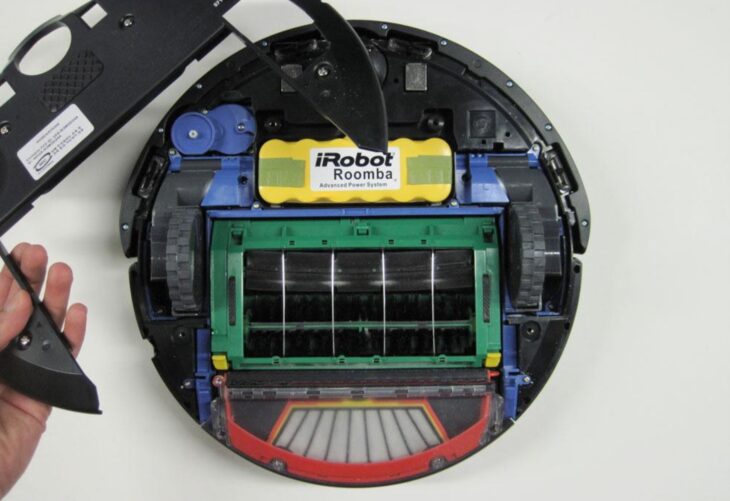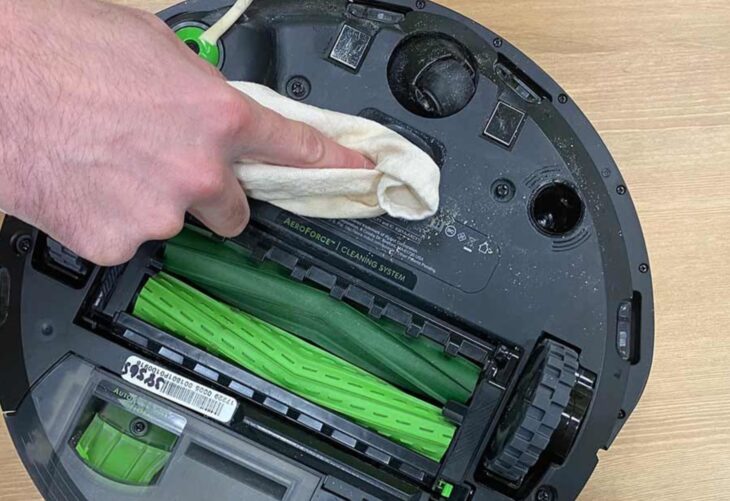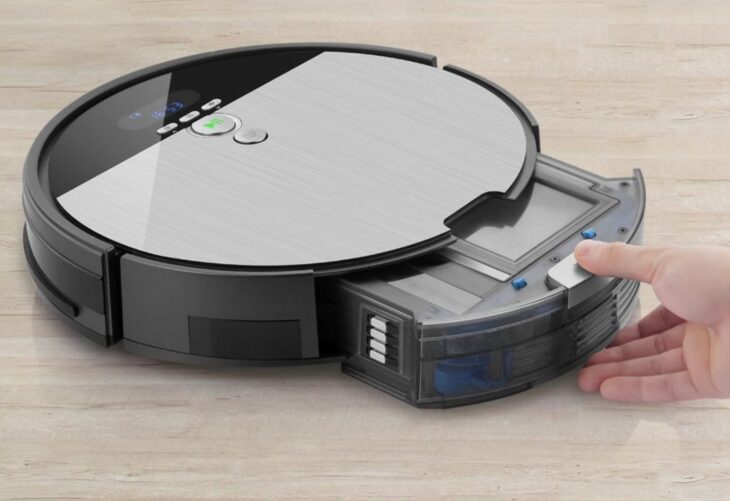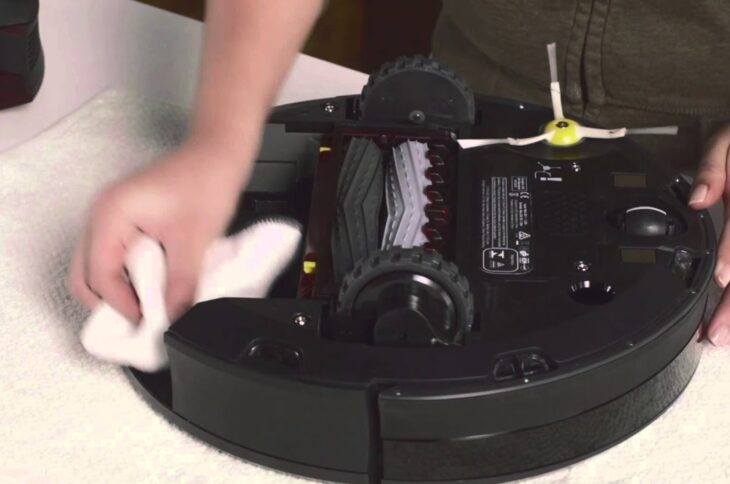If you don’t take care of your vacuum robot, it might fail prematurely. When it happens, there goes your money down the drain. The good news is there are easy ways to clean your robot vacuum in no time.
A vacuum robot has many components that need routine maintenance at least once every two weeks, depending on the frequency of use. You have to pay close attention to sensors and filters as these are the two common parts where dust and hairs accumulate.
Contents
Empty the Bin
The dirt bin collects all the unwanted particles sucked by the vacuum. It would help if you empty it regularly to take out all the dirt and debris. This step only takes a minute or two, so you should do this every time after use.
If the dust bin becomes full even before it finishes its work, you can stop the cleaning session and empty it first. Don’t wait for the compartment to get full, or else it will get clogged and will force the machine to malfunction.
After emptying the bin, get a damp, wrung cloth, and wipe down its interior. Dry the dust bin with another clean cloth before putting it back.

Clean the Filter
The filter is critical to the overall performance of the robot. When the filter is dirty, the machine needs to work double-time to suction the debris. Also, the filter may not be able to trap dust and allergens, causing them to escape into the air that you breathe.
To clean this part, open the dirt bin and take out the filter. Then, shake off the dust, or use a can of compressed air to blow off the dust.
Keeping the filter clean is a good practice, but remember to replace it every 3 to 12 months, depending on the manufacturer’s advice.
Clean the Sensors
Sensors help the robot to create a map of the floor. If they’re dirty, it might not pick up accurate data which could lead to poor navigation performance.
Check the manual to see where the sensor is located on your robot cleaner. If you don’t know where to find it, pay attention to this page as it discusses the parts of the device on various models.
To clean the sensor, get a damp microfiber cloth and wipe the sensor with it. Do not use a rough cloth or a paper towel as it might scratch the surface of the sensors.

Untangle the Brush Roll
For some robots with a brush roll, it’s a good habit to check on it to make sure no hairs are tangled around the bar. Sometimes, a significant volume of hair strands can affect the brush roll’s rotation. In this situation, proper extractor care is needed to lift debris and allow the motor to generate enough power.
Refer to your manufacturer’s manual to see if your robot has a self-cleaning brush roll. If your robovac doesn’t have one, then you need to remove the brush roll and take out or cut the hairs using a scissor. This task is easier if the protective plate encasing the brush is not attached to a screw.
Dust-Off the Side Brushes
The side brushes are not as sturdy as the main rolling brush and they only last for about three months. The replacement piece is cheap, and putting it in its place is easy, so this should not bother you.
In between the replacement period, however, you need to clean the side brushes to make sure that it functions well. Typically, these parts also collect dust and strands of hair.
To clean them, use a brush with soft bristles to sweep the mess. For stubborn debris, a quick rinse will remove them. Detach the side brushes first, then make sure they’re dry before you put it back in place. If you are using a Roomba robot, read Roomba’s maintenance procedures to know how to dust-off the side brushes.

Unclog the Wheels
The wheels are the parts of the robot that touch the floor and carpets. If you leave them unattended for some time, the human hair, pet fur, and other fuzz can wind around it and prevent it from moving well.
Always check the wheels before using the robot. If you see a buildup of hair tangled on the axles, take it out using a pocket knife. After removing all the strands of hair, use a dry cloth to wipe away all the dirt.
If the sediment is too thick, use a screwdriver to remove them. Do the same for the caster wheel. Your objective is to remove any element that could impede the wheels from moving in any direction.
Dealing With the Gross Stuff
A robovac could sometimes take a sick pet’s vomit and other gross stuff that your pet brings inside your house. If that happens to you, you should remove the dust bin and other detachable parts. Wipe them down using a foam sponge or any other non-corrosive cleaner for electronics. You can rinse the dust bin in a sink, but make sure that it’s dry before putting it back.
Use alcohol wipes with 70% isopropyl strength to sanitize the parts. Another way to disinfect the robot is by using a sponge sprayed with a sanitizer.

Conclusion
A robot vacuum can clean all the floors for you. However, cleaning it is something that you need to do. The simple steps above are the things you need to do to maintain the good condition of the machine. If you require specific maintenance instructions, always refer to the manufacturer’s manual for more information.
